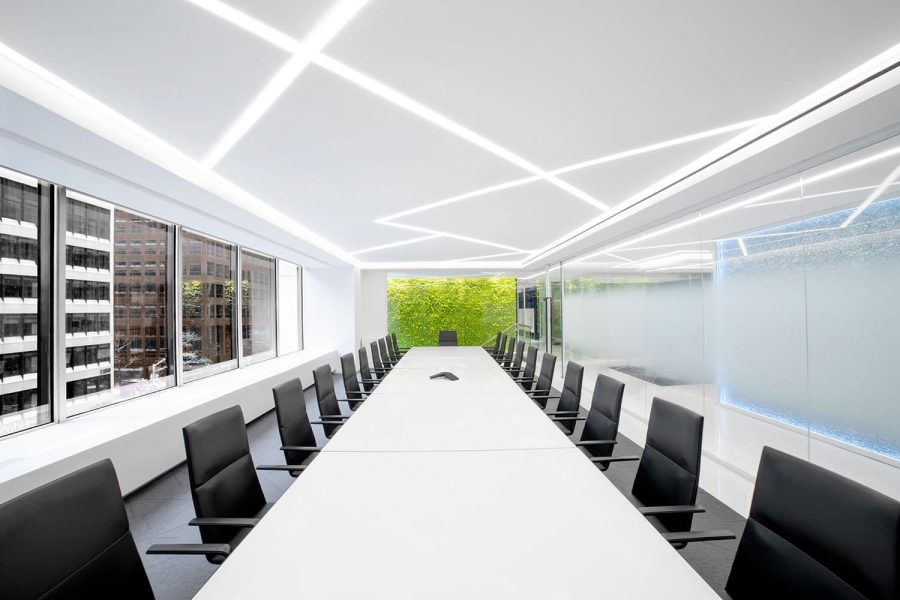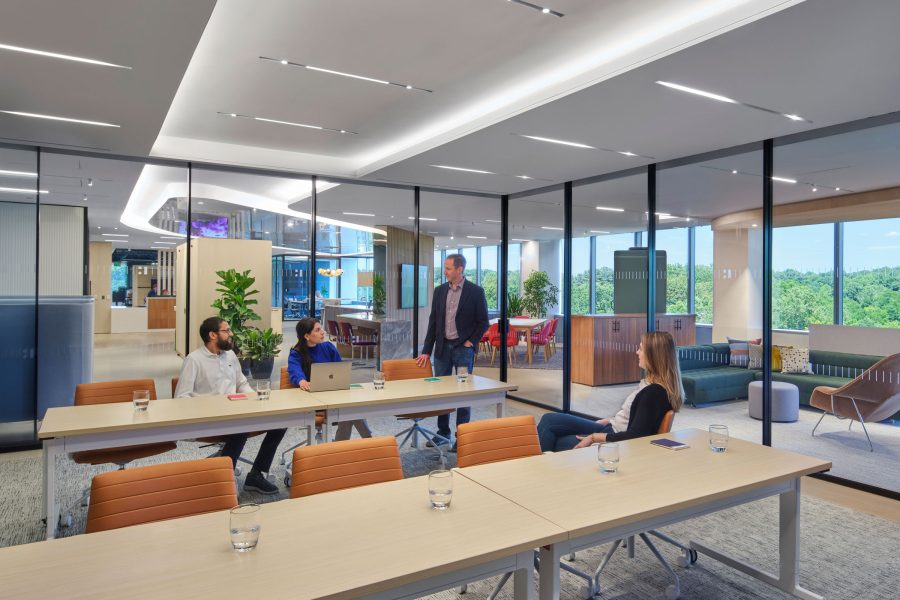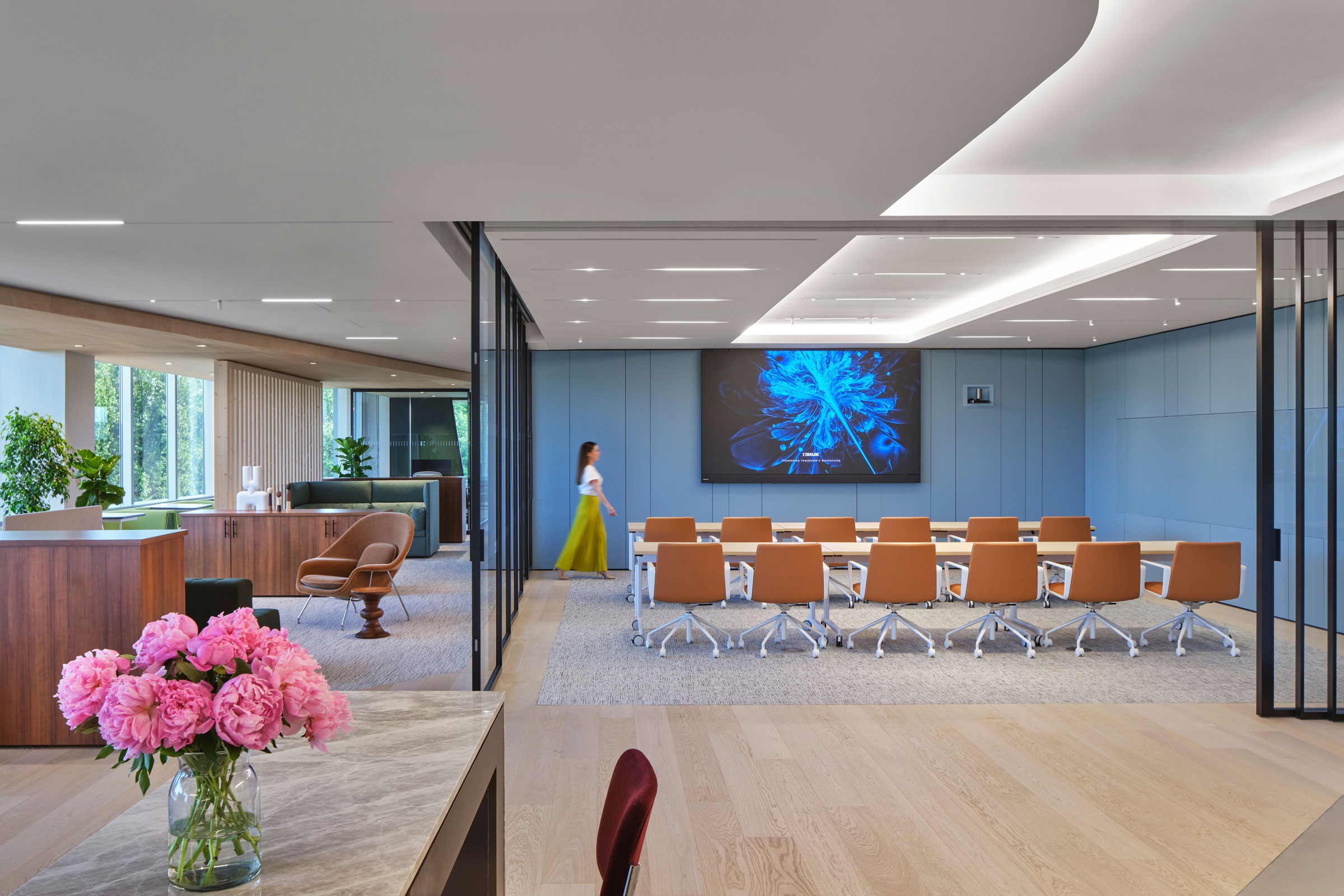Story at a glance:
- The built environment is responsible for 37% of global greenhouse gas emissions, highlighting the need for the industry to achieve carbon neutrality.
- Coronet is lighting the way with Declare Label and Red List–free lighting solutions, aiming to minimize carbon emissions in both the production and operational phases of lighting fixtures.
Proper lighting shapes how we experience spaces and plays a significant role in reducing the environmental impact of a building over its lifetime.
“The right lighting and ambience can change people’s worlds,” says JR Krauza, vice president of product for Coronet LED, an architectural lighting manufacturer that designs and builds sustainable lighting solutions in the US.
The right lighting and ambience can change people’s worlds.
Krauza says carbon neutrality in lighting can be divided into two primary phases: the production phase (cradle-to-gate) and the use phase (gate-to-end-of-life). The production phase involves the carbon emissions associated with manufacturing the lighting fixtures, including the sourcing of materials and the energy consumed during production. The use phase considers the carbon emissions generated by powering these lights throughout their operational life.
The pursuit of carbon neutrality has spurred innovation in design in many areas, and that includes lighting. Energy-efficient lighting continues to be in high demand from top architects, including those at Gensler. While the world’s largest architecture firm prioritizes natural light where possible, every other lighting element they choose must be super sustainable.
“We try to use as little artificial light as possible, but when we do need it, it needs to be the most energy-efficient lighting fixture we can find,” says Stephen Katz, a principal and technical director in Gensler’s Chicago office. “Does it use the least amount of material and last a long time before needing repair or replacement? What is the recycled content of the materials? Those questions are just as critical as ‘Does it look good?’”
Innovative Lighting

The CLO Virtual Fashion Headquarters project uses LS Curve lighting. Photo courtesy of NBBJ
Coronet, itself a CarbonNeutral® company, is focused on designing energy-efficient fixtures that provide the best quality light to meet the needs of companies and designers who want to reduce their carbon footprint.
Coronet’s updated LS Series luminaires, including the LS Curve, achieve up to 135 lumens per watt at greater than 90 CRI. The Declare-listed products are available with optional Red List–free construction. When a designer chooses a product with a Declare label, they have full transparency with regard to the ingredients.
Setting Industry Standards

Architectural lighting manufacturer Coronet LED designs and builds sustainable lighting solutions for projects all over the US. Photo by LJ Photography
Coronet is also leading efforts within the lighting industry to standardize Environmental Product Declarations, or EPDs. “The idea behind EPDs is to collect all the information about the embodied carbon in your product,” Krauza says.
Unlike concrete, which has a handful of ingredients, lighting products involve complex components like aluminum, steel, wiring, LEDs, and PCBs—making EPD data collection challenging, Krauza says. Coronet participated in the LCA (Life Cycle Assessment) incubator project alongside approximately 30 manufacturers to develop industry-standard EPDs by contributing data for some of its products, including linear and pendant fixtures.
Gensler hopes more companies will work to find ways to build toward a carbon neutral world. “If they’re already using materials that have a very good carbon rating right now, why not just be aware and use more of them and find out what the other ones are?” says Vince Flickinger, principal and design director at Gensler’s Houston office and global practice area leader for energy. “At some point we’re trying to make this ubiquitous.”

The Gensler-designed Bialek project includes lighting from Coronet. Photo by Halkin Mason Photography

